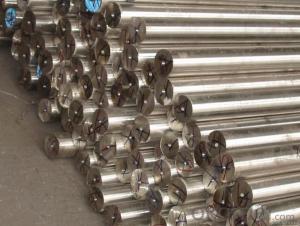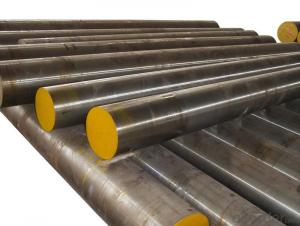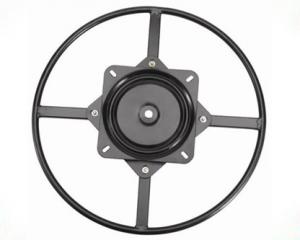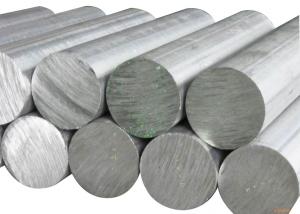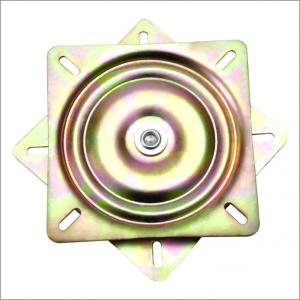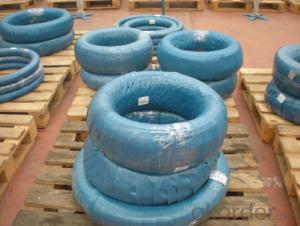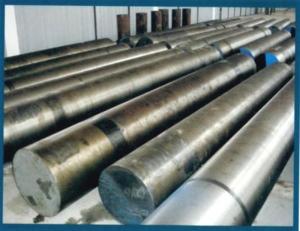Forged 1.2436 Tool Steel,D6 Steel Round Bar
- Loading Port:
- China main port
- Payment Terms:
- TT OR LC
- Min Order Qty:
- 25 m.t.
- Supply Capability:
- 10000 m.t./month
OKorder Service Pledge
OKorder Financial Service
You Might Also Like
Item specifice
Forged 1.2436 tool steel,D6 Steel Round Bar
Grade: X210CrW12/1.2436/SKD2/D6
Chemical composition:
Standard | Chemical composition | C | Si | Mn | S | P | Cr | Ni |
DIN |
% | 2.00/ 2.25 | 0.10/ 0.40 | 0.15/ 0.45 | ≤ 0.030 | ≤ 0.030 | 11.00/ 12.00 | 0.60/ 0.80 |
Size:
Round bar | Diameter (mm) | Length (mm) | |
50~500 | 2000~5800 | ||
plate/sheet | Thickness (mm) | Width (mm) | Length (mm) |
20~400 | 80~1000 | 2000~5800 |
Surface treatment :
Round bar : Black /Grinding / Polished / Peeled / Turned
Steel plate : Black / Milling / Machined
Characteristic:
1. High carbon and high chromium,
2. Dimensionally stable and ledeburitic 12 % Cr alloyed cold work tool steel
3. Non-deforming, low distorsion and better hardenability
4. High compressive strength and high surface hardness after hardening
Application:
1.2436 is for making high performance cutting, blanking tools up to 4 mm sheet thickness,
woodworking tools, thread rolling dies, deep drawing and cold extrusion tools, measuring tools,
scraping and trimming tools, deburing tools, moulds for abrasive plastics.
Business Terms
Lead time: 40 days after contract
Port of unloading : Shanghai/Wuhan/Ningbo
Productivity: 4000 metric ton per month
Marketing : America/Asia/Europe
Product show:
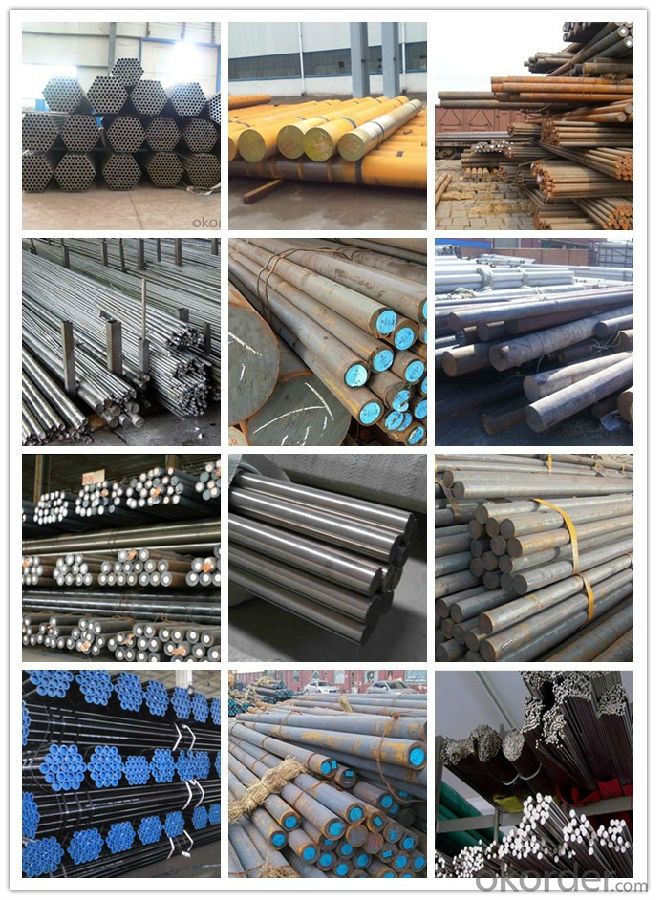
Workshop show:
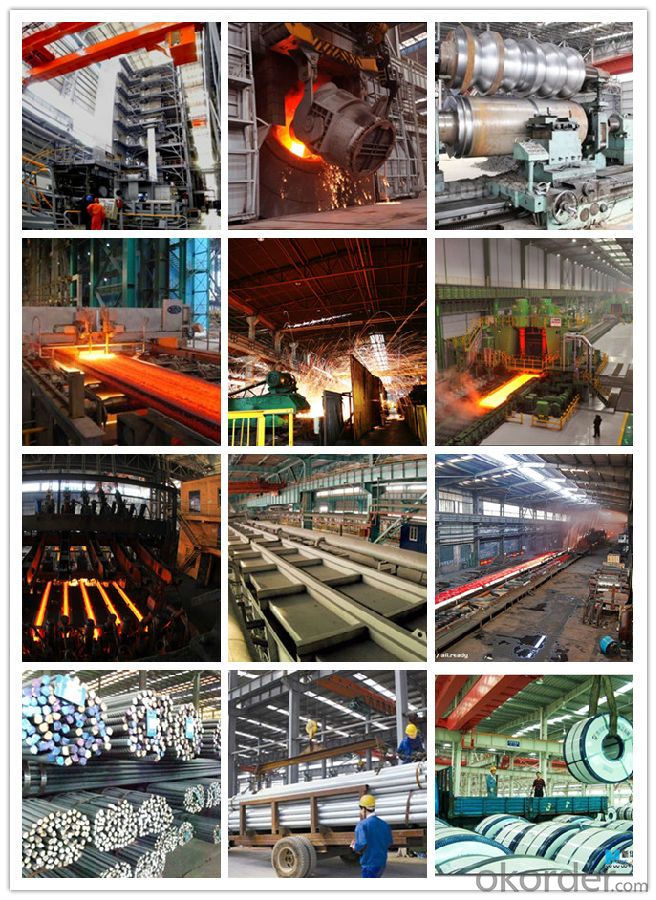
FAQ:
1, Your advantages?
professional products inquiry, products knowledge train (for agents), smooth goods delivery, excellent customer solution proposale
2, Test & Certificate?
SGS test is available, customer inspection before shipping is welcome, third party inspection is no problem
3, Payment Terms?
30% TT as deposit and 70% before delivery.
Irrevocable L/C at sight.
4, Trading Terms?
EXW, FOB, CIF, FFR, CNF
5, After-sale Service?
We provides the services and support you need for every step of our cooperation. We're the business partner you can trust.
For any problem, please kindly contact us at any your convenient time.
We'll reply you in our first priority within 24 hours.
- Q:How is ultra-high-strength steel used in the construction industry?
- Ultra-high-strength steel is commonly used in the construction industry to enhance the structural integrity and resilience of buildings and infrastructure. Its exceptional strength-to-weight ratio allows for the creation of lighter and more durable structures. This steel variant is often employed in applications such as high-rise buildings, bridges, and offshore structures, where its superior strength properties provide increased safety and load-bearing capacity.
- Q:What are the different galvanizing techniques used for special steel?
- There are several galvanizing techniques used for special steel, including hot-dip galvanizing, electro-galvanizing, and mechanical galvanizing. Hot-dip galvanizing involves immersing the steel in a bath of molten zinc, creating a thick, durable coating. Electro-galvanizing, on the other hand, uses an electrical current to deposit a thin layer of zinc onto the steel surface. Mechanical galvanizing involves tumbling the steel in a zinc powder and glass bead mixture, which adheres to the surface through friction. Each technique has its own advantages and is used depending on the specific requirements of the application.
- Q:What are the different methods of controlling the grain size in special steel?
- Some of the different methods of controlling the grain size in special steel include thermomechanical processing, alloying elements, grain refinement techniques such as grain size control agents, and heat treatment methods like annealing and quenching.
- Q:What are the recycling options for special steel?
- There are several recycling options available for special steel. One option is to take it to a local scrap yard or metal recycling facility. These facilities have the necessary equipment to process and recycle special steel. They will typically pay you for the steel based on its weight and current market value. Another option is to contact a specialized recycling company that deals specifically with special steel. These companies have expertise in handling and recycling this type of steel and can ensure that it is properly processed and reused. Additionally, some steel manufacturers and distributors have their own recycling programs in place. They may offer take-back programs where they will collect and recycle special steel from their customers. This can be a convenient option as it eliminates the need to find a separate recycling facility. It is important to note that special steel may require special handling and processing due to its unique properties. Therefore, it is recommended to consult with a professional or contact the recycling facility or company beforehand to ensure that they can properly handle and recycle the specific type of special steel you have.
- Q:What are the challenges in machining high-speed special steel?
- Several challenges arise when machining high-speed special steel due to its unique properties and characteristics. Its extreme hardness presents one of the main obstacles, making cutting and shaping difficult. High-speed special steel typically has a high carbon content and undergoes heat treatment to enhance its hardness, resulting in increased wear on cutting tools. The increased hardness of this steel also leads to elevated heat generation during the machining process. This heat can cause thermal distortion and impact the dimensional accuracy of the final product. To counteract this, specialized cooling techniques and cutting tools with advanced coatings must be used to dissipate heat and maintain stability. Another challenge is the brittleness of high-speed special steel. It tends to have low toughness and is susceptible to cracking and chipping during machining operations. To minimize the risk of tool failure and excessive stress, careful selection of cutting parameters such as cutting speed, feed rate, and depth of cut is necessary. Furthermore, high-speed special steel often contains alloying elements like tungsten, vanadium, and cobalt, which can further complicate the machining process. While these elements increase the strength and wear resistance of the steel, they also make it more challenging to machine. Effective machining of these alloys and achieving desired surface finishes requires specialized tool materials and cutting strategies. Additionally, the cost of high-speed special steel is often significantly higher than that of conventional steels, adding to the challenges of machining. The high tooling costs associated with the cutting tools required for machining this steel can be a substantial investment. Overall, machining high-speed special steel necessitates advanced cutting techniques, specialized tooling, and careful consideration of cutting parameters to overcome the challenges posed by its extreme hardness, brittleness, and alloying elements.
- Q:What are the different methods of surface hardening for special steel?
- Special steel can be surface hardened using various methods. These methods comprise: 1. Carburizing: By subjecting the steel to a carbon-rich environment, such as gas or liquid, carbon atoms can infiltrate the steel surface. This results in enhanced surface hardness and wear resistance. 2. Nitriding: Steel is heated in an environment rich in nitrogen, causing nitrogen atoms to permeate the surface. This creates a durable, wear-resistant outer layer. 3. Induction hardening: By passing an alternating current through a coil, a magnetic field is generated, inducing electrical currents in the steel. The resistance to these currents generates heat, leading to high surface temperatures and rapid quenching, ultimately increasing hardness. 4. Flame hardening: The steel surface is heated using a flame or oxy-fuel torch, followed by quenching in water or oil. The swift cooling from elevated temperatures facilitates surface hardening. 5. Laser hardening: Laser beams are employed to rapidly heat a specific area of the steel surface, which is then promptly cooled with a coolant. This localized heating and cooling process enhances the hardness of the treated region. 6. Plasma nitriding: Steel is placed in a low-pressure plasma chamber, where nitrogen ions bombard the surface, facilitating nitrogen diffusion and the formation of a hardened layer. Each method offers distinct advantages and is suitable for diverse applications and types of special steel. The selection of a surface hardening method depends on factors such as desired hardness, dimensional limitations, and specific application requirements.
- Q:What are the main advantages of using special steel in the marine industry?
- The main advantages of using special steel in the marine industry are its exceptional strength, durability, and corrosion resistance. Special steel can withstand harsh marine environments, including exposure to saltwater and extreme weather conditions, without corroding or deteriorating. Its high tensile strength allows for the construction of lighter and more fuel-efficient ships, while still maintaining structural integrity. Additionally, special steel offers excellent weldability and formability, making it easier to fabricate complex and intricate marine structures. Overall, the use of special steel results in safer, more reliable, and longer-lasting vessels in the marine industry.
- Q:What are the main factors affecting the fatigue strength of special steel?
- Several main factors influence the fatigue strength of special steel: 1. Material composition: The fatigue strength of special steel is determined significantly by its chemical composition. Alloying elements like carbon, chromium, molybdenum, and nickel can improve the material's ability to withstand cyclic loading and enhance its resistance to fatigue. 2. Microstructure: The fatigue strength of special steel is greatly affected by its microstructure, including grain size, crystallographic texture, and the presence of precipitates or phases. Fine-grained structures generally have higher fatigue strength due to reduced stress concentrations and improved resistance to crack initiation and propagation. 3. Surface condition: The fatigue strength of special steel can be significantly impacted by the surface finish and integrity. Surface defects such as scratches, notches, or roughness can act as stress concentrators and initiate fatigue cracks. Proper surface treatments like grinding or shot peening can reduce stress concentrations and introduce compressive residual stresses, improving fatigue resistance. 4. Heat treatment: The fatigue strength of special steel can also be influenced by the heat treatment process used to modify its structure and properties. Appropriate heat treatment techniques like quenching and tempering can optimize the material's microstructure, enhance its hardness, and improve its resistance to fatigue. 5. Loading conditions: The fatigue strength of special steel is greatly influenced by the type and magnitude of cyclic loading applied to it. Factors such as stress amplitude, mean stress, load ratio, and frequency of loading can all impact the material's fatigue life. 6. Environmental conditions: The fatigue strength of special steel can be decreased by the presence of corrosive environments, high temperatures, or other harsh conditions. Environmental factors can accelerate crack initiation and propagation, leading to reduced fatigue life. Selecting corrosion-resistant alloys or applying protective coatings can mitigate the adverse effects of the environment on fatigue strength. By considering and optimizing these factors, manufacturers and engineers can enhance the fatigue strength of special steel, ensuring its reliability and longevity in various applications.
- Q:How does special steel contribute to the manufacturing of industrial machinery?
- Special steel plays a crucial role in the manufacturing of industrial machinery by providing superior strength, durability, and resistance to extreme conditions. It allows for the construction of components that can withstand heavy loads, high temperatures, and corrosive environments, ensuring the reliability and longevity of the machinery. Additionally, special steel's unique properties enable the production of precise and intricate parts, enhancing the overall performance and efficiency of industrial machinery.
- Q:How is special steel used in the construction manufacturing process?
- Special steel is used in the construction manufacturing process for its unique properties such as high strength, durability, and resistance to corrosion. It is commonly used to fabricate structural components, reinforcement bars, and other critical elements in buildings, bridges, and infrastructure projects. Additionally, special steel alloys are utilized in the production of specialized tools and machinery used in the construction industry.
1. Manufacturer Overview |
|
|---|---|
| Location | |
| Year Established | |
| Annual Output Value | |
| Main Markets | |
| Company Certifications | |
2. Manufacturer Certificates |
|
|---|---|
| a) Certification Name | |
| Range | |
| Reference | |
| Validity Period | |
3. Manufacturer Capability |
|
|---|---|
| a)Trade Capacity | |
| Nearest Port | |
| Export Percentage | |
| No.of Employees in Trade Department | |
| Language Spoken: | |
| b)Factory Information | |
| Factory Size: | |
| No. of Production Lines | |
| Contract Manufacturing | |
| Product Price Range | |
Send your message to us
Forged 1.2436 Tool Steel,D6 Steel Round Bar
- Loading Port:
- China main port
- Payment Terms:
- TT OR LC
- Min Order Qty:
- 25 m.t.
- Supply Capability:
- 10000 m.t./month
OKorder Service Pledge
OKorder Financial Service
Similar products
New products
Hot products
Related keywords
